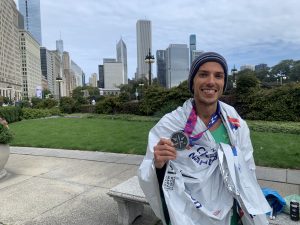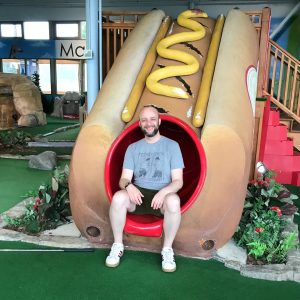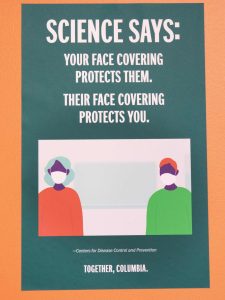Every month, members bring lists upon lists of addresses where they suspect drugs are being sold, descriptions of suspected cocaine, crack, and marijuana dealers, and even the names and nicknames of known drug dealers on their blocks.
The volunteers’ efforts led the police to conduct a reverse drug sting in the 1000 block of North Harding Avenue in July. They rounded up 30 people last month by arresting the dealers, then playing phony drug dealers themselves and arresting people buying drugs.
“If you got no demand, it chokes off the supply,” said Sgt. James Stubbe.
But narcotics still showed up as No. 2 on the beat’s top 10 crimes for July. The beat also ranks number six out of 280 beats for narcotics crimes, according to the Chicago Police Department, showing there is still a demand and new group of people ready to supply.
Jimmy Simmons, beat facilitator for the past 12 years and beat resident for more than 20 years, says narcotics started filtering into his West Humboldt Park neighborhood in the 1970s but didn’t start getting heavy until 1990.
Since then, he says drug dealers have become bolder, forcing the community to take a stronger stand against dealing.
The constant fight between law-abiding citizens and drug dealers has led to a fluctuation in narcotics crimes. Simmons said after a drug sting or the arrest of a high-profile drug dealer, the neighborhood will be peaceful for several months, but it seems there’s always another generation or another gang ready to step in as the new supplier.
“You might get three months of peace, and BAM,” he says. “All of sudden, here it comes again. A new crew has moved in. And these crews, some of them are the worst I’ve ever seen.”
Residents say that corners connecting to Thomas Street, like Pulaski Road and Harding, Springfield and Lawndale Avenues, are the heaviest right now.
“It’s at a point where things have escalated,” said Simmons. “We saw two months go, three months go by where it was down. But there’s a lot of shooting going on and a lot of gang wars over street corners.”
The crime watchdogs at www.chicagocrime.org rank beat 1112 No. 1 in narcotics crimes for the whole Harrison 11th district. The web site says there have been 1,233 reported narcotic crimes from November 2005, the earliest date offered by the web site, to Aug. 12. Beat 1132 falls at a distant second with 870 reports.
But despite what seems like a never-ending battle, the CAPS members, some who have been coming since the program began in 1994, continue to fight for the peaceful neighborhood they remember while growing up. Because “the minute you get lax, they come back,” said Stubbe.
Simmons has led six protests as beat facilitator and says that in order to get a step ahead of new and upcoming potential drug dealers, the volunteers need to be just as bold as the foes they are dealing with.
Another CAPs volunteer, Jessie Lagunas, is no stranger to standing up for his property. He’s also no stranger to the threats that often follow.
“I tell them to leave from in front of my house,” he said at a meeting. “They don’t want you to see them there. They want you to go away. They tell you to go away.”
Simmons says the fear of being threatened is probably why many people are afraid to openly stand up to drug dealers and gang members. He says people will attend CAPS meetings and call the police but often fear being seen at neighborhood BBQ’s and block club parties, where everyone can see on which side they stand.
However, Stubbe says that threatening a CAPS volunteer is the same as threatening a police officer. A conviction can lead to five years in prison.
Simmons encourages homeowners to come out to community events and to be visible by doing simple things like watering the front lawn. He says that CAPS meetings and police calls help alleviate the crime, but ultimately, the community has to take its neighborhood back.
“I try not to alienate them,” says Simmons about the drug dealers. “I try to tell them about different opportunities out there. But about 20 years ago, the young people decided they wanted the fast life. And the people have to stand up and say enough is enough.”
Categories:
Justice & Crime Public West Side
Tags:
caps crime drugs humboldt park






Be First to Comment